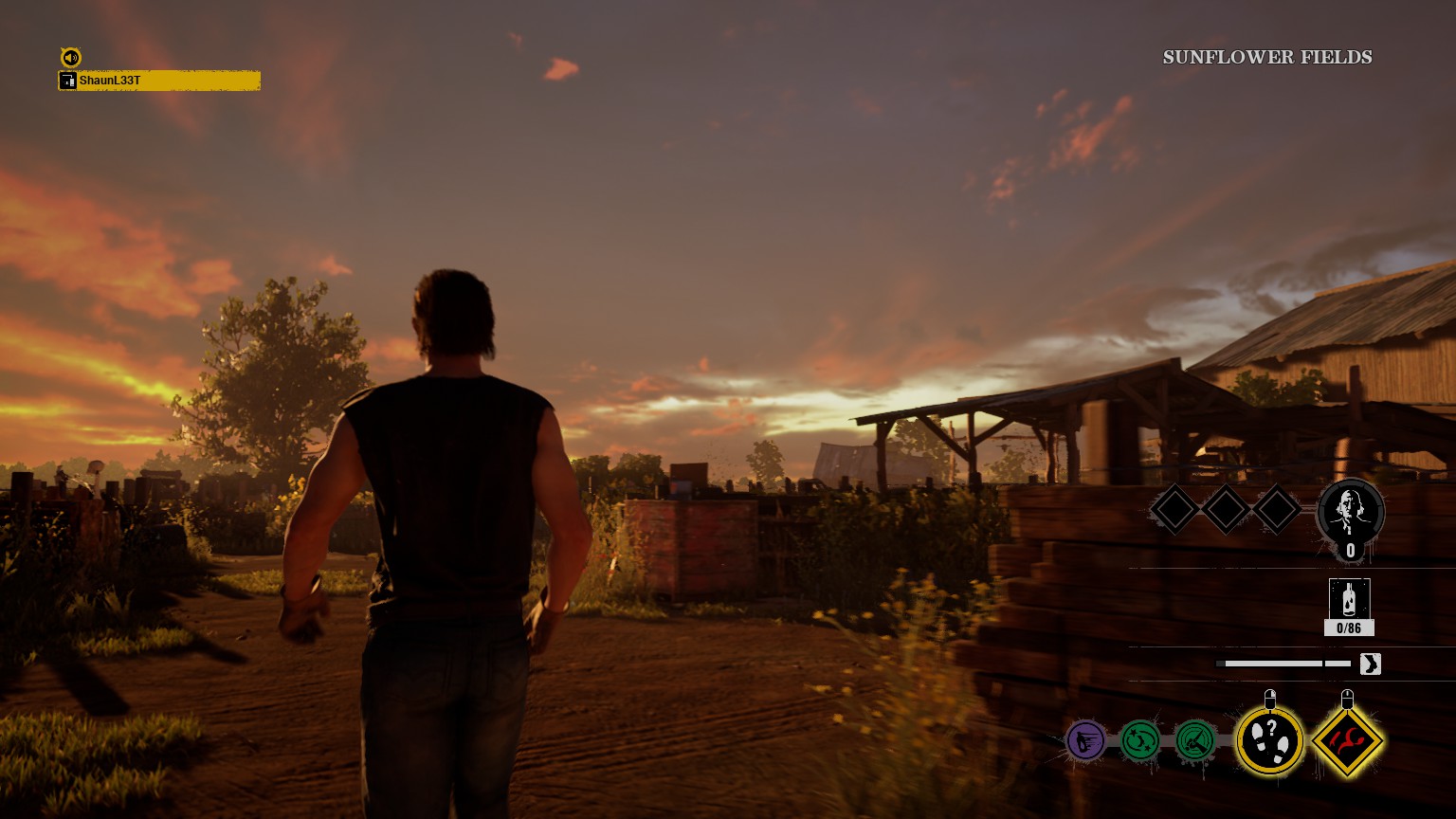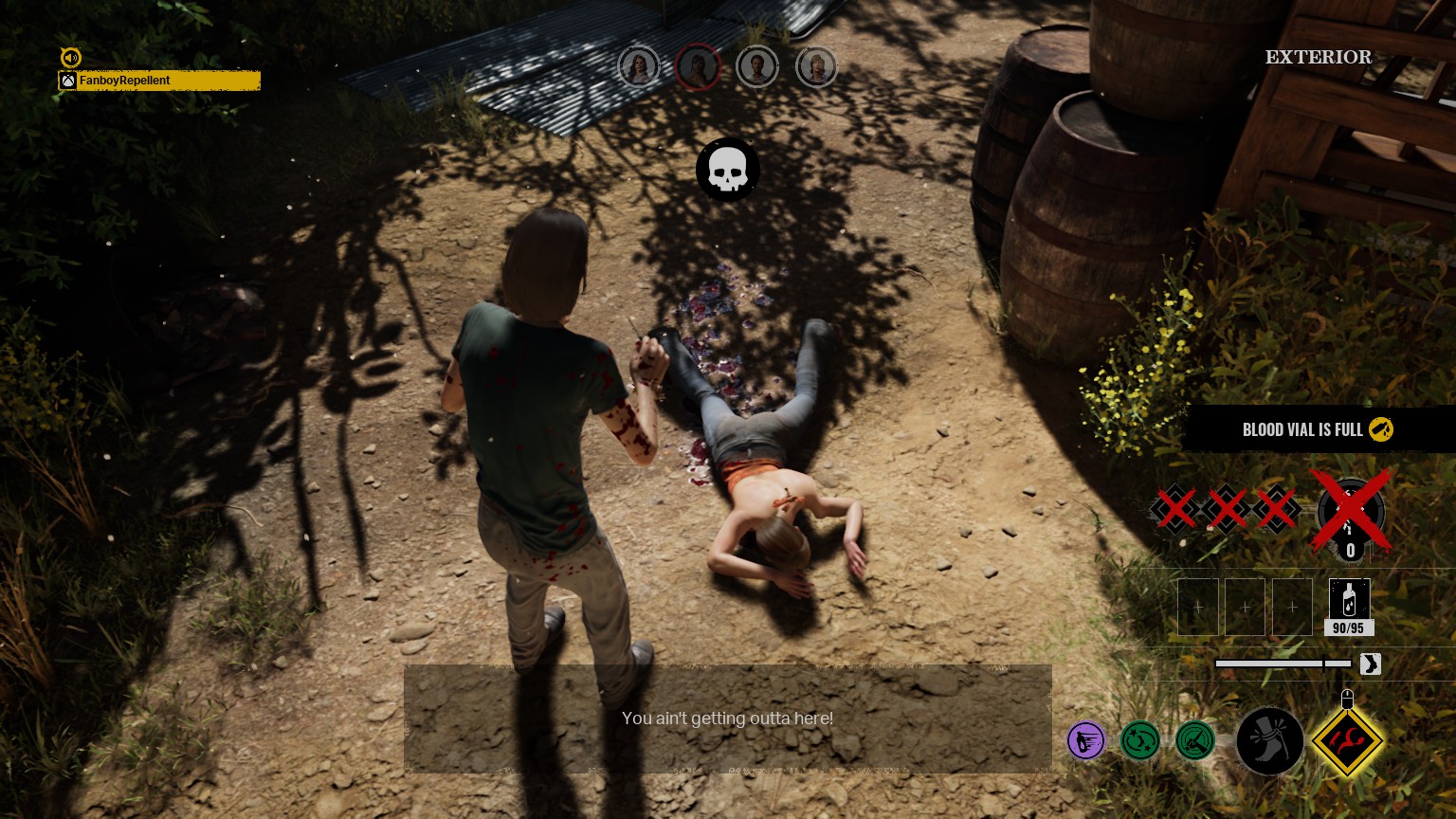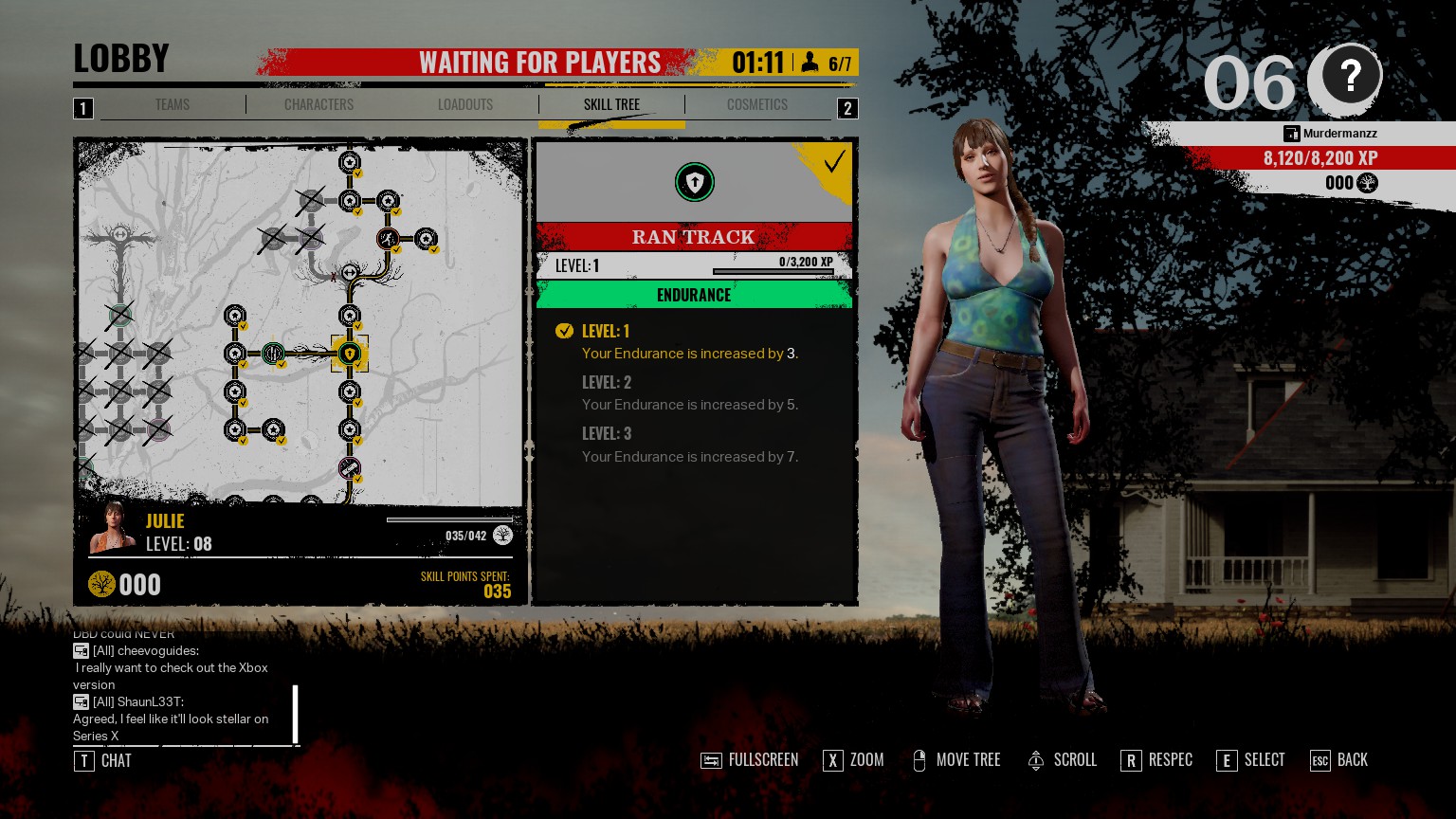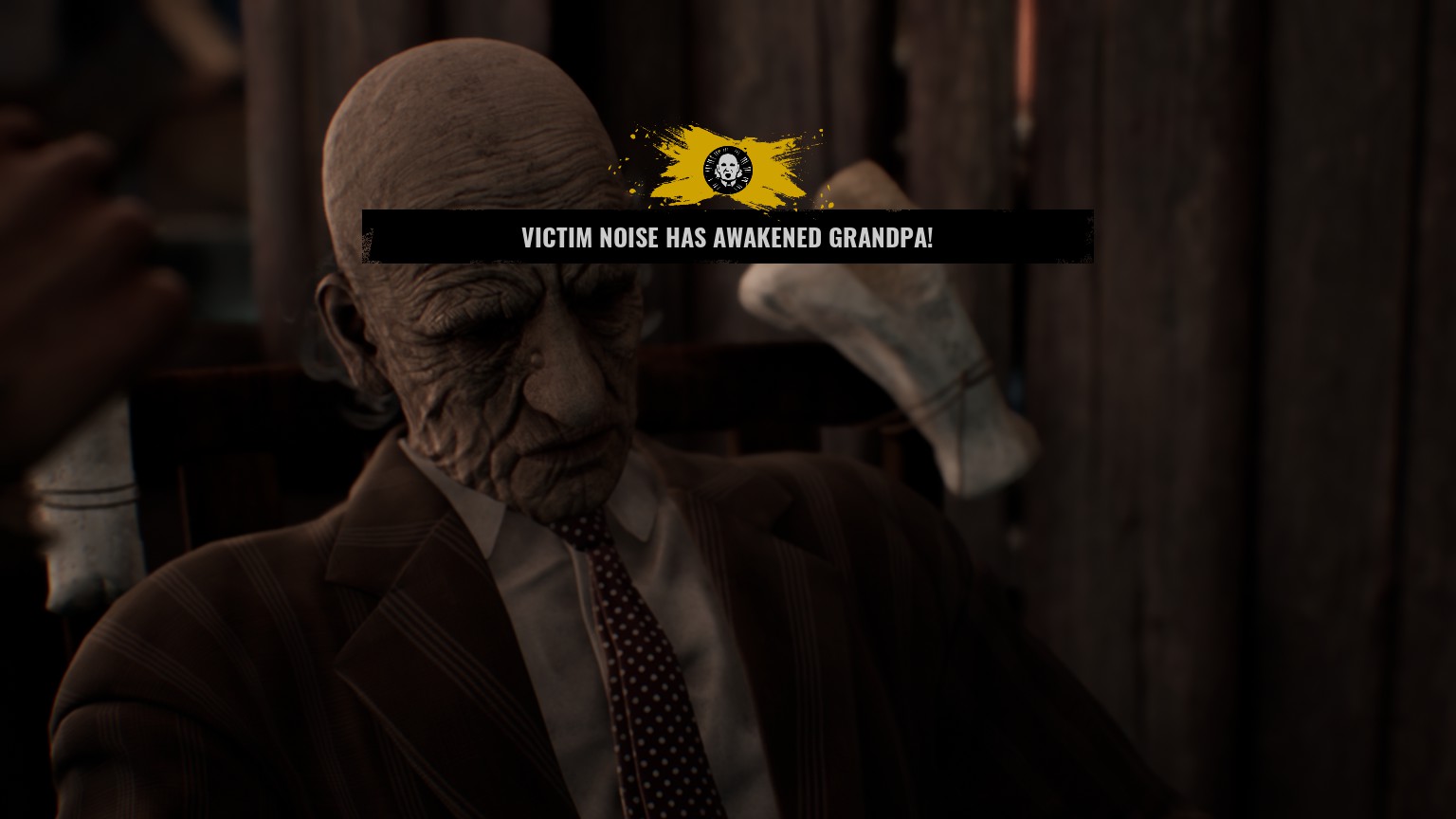The time has come. With Dead by Daylight having reigned supreme over the asymmetrical horror multiplayer scene for years, Sumo Digital and Gun Interactive are aiming to dethrone them. Enter The Texas Chain Saw Massacre, built off the experience and knowledge gleaned by the team following their noble efforts on Friday The 13th.
Live-service horror games built on a multiplayer focus have become quite the niche genre in their own right. Unfortunately, previous efforts (even the successful ones) have had rough launches, thanks to technical issues galore and balancing issues that don’t even bear thinking about. The Texas Chain Saw Massacre certainly doesn’t escape these trappings, disappointingly having not learnt from the past.
However, as alluded to in our technical test impressions, the fundamental mechanics of the game offer the potential for a challenging and addictive online experience. Does the fun outweigh the issues? Can the game rev its chainsaw long enough to make Leatherface a gaming icon as well as the movie version?
Family Business
The core of The Texas Chain Saw Massacre is its four Victims vs three Family members mode. There are three maps at launch, all based on locations from the movies (Family House, Gas Station and Slaughter House). Hosting five Victims and five playable Family members, including the infamous Bubba himself, it’s a fitting homage to the source material.
In terms of set-up, matches are straightforward: Victims start in the basement of the map and must escape the clutches of their captors. The Family conversely hunt them down and seek to gut, slice or bash their consciousness from their living form. It sounds simple enough, but how you go about achieving your objective is anything but.
Comparisons will naturally be drawn to titles like Dead by Daylight (DBD) and Friday The 13th (FT13), but The Texas Chainsaw Massacre feels like its own psychopathic, murderous beast. Unlike DBD, Texas isn’t especially easy to pick up and play. Tutorials are only dolled out through laborious videos at the main menu and beat you over the head with a deluge of information all at once. Kinda like Bubba teaching you how the beat of a song goes with a hammer on your skull.
Moreover, particularly as the Victims, the early learning curve is steep. It’s very common to be killed within the first two minutes of a match, which will be incredibly demoralising for new players. There’s a lot to learn off the bat, and Texas doesn’t always do the best job of teaching you how to survive before throwing you head-first into the bloodstained deep end. Stick with it, however, and there’s a lot of complexity, challenge and strategy that will start to unravel before you.

The Thrill of Survival
The Texas Chain Saw Massacre is almost two games in one, such is the difference in approach between playing Victim or Family. Interestingly, I never developed a clear preference for either side, often loving, and hating, both in equal measure. As with any online-only game, your experience is going to sway heavily depending on the other players involved.
As Victims, your job is to escape. Once you hop off of your starting hook, you’ll be sneaking or sprinting around, grabbing items and unlocking all manner of doors or objects to reach safety. There are three layers to every map: basement, inner section, and outer section. You have multiple avenues of succeeding, for example through electric-defended gates or time-sensitive pressure-activated openings.
Most of the Victim gameplay can boil down to sneaking and hitting ‘E’ on your keyboard a lot to do everything from pick locks to busting up generators. The edge comes from the constant tension of being hunted by the Family. You may have to navigate traps or plot an entirely new escape route when you discover Cook has double-locked every door en route to your original salvation.
I found it deceptively captivating. That is, provided I wasn’t killed in the first minute. The basement section is probably the worst for Victims, owing to its maze-like structure and that Leatherface can spawn right next to you immediately. There’s some balance needed for the opening minute or so, as while Victims can sprint away from a killer, it’s a short-term burst and your options for evasion are relatively limited. Get caught in a dead-end and it’s game over.
Losing a teammate early on will also make things even more difficult for the rest of the squad for the match. Having three killers roaming around means you need as many distractions as possible. Texas really incentivises communication as a result, making it very rewarding for squads who coordinate effectively.

Satiate The Blood Lust
As the Family, The Texas Chain Saw Massacre comes alive, ironically. While Victims have their own special abilities, they feel more like counters, and I’d easily forget about them. The Family’s abilities, however, will fundamentally change your playstyle. Even in the technical test and during the review periods, people developed very clear favourites based on what kind of sadistic presence they wished to be.
As Leatherface, your role will be to hound the Victims, applying pressure and dealing damage, at the expense of mobility. Personally, I got snared with Hitchhiker. Finding the perfect spot to lay traps and being mobile enough to keep eyes on a runaway survivor was superbly engaging. Half of the thrill of the game for me was discovering just how many people will climb a ladder without looking over the top.
Every Family member feels unique as a result, with a powerful corresponding ability. This does have the catch-22 of if you can’t play as your preferred character (for both sides), it can be deflating. It was all too common to see people in stand-offs over who could be Connie – I expect her pick rate to be ridiculously high.
Chasing and maiming survivors is also thrilling, if not for the jankiness of it. Due to how movement works in Texas, it was very easy to completely whiff survivors. Or, if they were more skilled players, to actively bait attacks that hitboxes simply won’t detect. You have to be almost standing on top of players, like that awkward passenger next to you on a train who won’t respect personal space.
Consequently, don’t expect a smooth experience when learning the ropes of killing survivors. Map knowledge is king and you will be left devoid of hope when a good Victim crew escapes within the first three minutes of a match. There’s a real issue in terms of balance that’s a theme for both sides – Victims can be killed immediately and as Family, it’s easy to have Victims slip out without you ever even sniffing them.

The Skills Seesaw
The aforementioned map knowledge is so important because of how intricately designed the maps are in The Texas Chain Saw Massacre. There’s an abundance of crouch-height bushes, holes to slip through, cupboards to hide in and windows to fling yourself out of, epic move style. Maps also open up into rather massive spaces, making evasion easier as the match progresses for Victims unless the Family have made every effort to cover escape routes.
To counter this, the Family can deliver blood to Grandpa. As he ascends through his five tiers of power, he’ll increasingly provide windows of opportunity to spot careless Victims, eventually showing their aura regardless of whether they’re moving or not. This helps keep the matches going at a good pace and puts pressure on both sides to move quickly, creating organic opportunities for emergent gameplay.
However, both of these engaging systems are partially undermined by The Texas Chain Saw Massacre’s approach to progression. Unlike other games in the genre to use perks as the main source of diversity and build style, Texas has a direct upgrade system using perk points. As you rank up your profile, you can invest tokens into a character’s skill tree, gaining new equippable perks, or points.
To demonstrate why this is a problem, let me explain my experience. As a basic Julie, I would have to balance mashing ‘E’ on lock-picking skill checks with making too much noise. Once I pumped 15+ points into her stealth attribute, I never had to even consider not mashing the button as I was silent when doing so. I could get off the hook in seconds, gather tools in a heartbeat and in one match, escape before three minutes were hit.
I like the idea of having a more direct way of increasing a character’s power levels, but it feels broken and overpowered in its current form. I went from a bad survivor to an apparently God-tier one not through knowledge and skill, but through ploughing points into one person. This will inevitably lead to newer players being discouraged as the game gets older, as they simply won’t be able to compete with fully-tiered players. Imagine a rookie Victim vs a Bubba with maxed stats, it’ll be like Michael Myers stalking a poor, helpless snail.

In A Blaze Of Gore-y
While the skill tree and progression need tweaking, the technical performance of The Texas Chain Saw Massacre needs an entire gutting out, Bubba style. This game is positively riddled with bugs, like the underside of a rock in rural America, with a suspicious family who love chainsaws a bit too much.
Hitting a Victim? Massive framerate drop. Which, created an interesting means of communicating to every player when someone was in trouble. My character would often get stuck within the geometry of doors or would rubber-band when trying to interact with something. At times, both myself and others had our avatars just straight up lock up and refuse to move. Which is great, when Sissy is sauntering over to poison and stab you.
Matchmaking has also been a nightmare, requiring a full seven-player lobby to start a match. Only, it won’t just sit in the lobby until players are found, it’ll just kick everyone to the menu to ready up again, and again, and again. The in-game chat feature never worked for me at all and twice the game locked up and crashed.
The attention to detail, lighting and designs of the maps or characters themselves are wonderfully realised. It’s just that engaging with the game can be more nightmare-inducing than the violent carnage of the Family. Executing a Victim is a feast of gore and violence, but it doesn’t feel quite as impactful when the game is breaking at the seams to show it.
A lot of work is needed to make the game technically stable, basically. Despite the issues, however, I had fun. There’s an addictive quality to The Texas Chain Saw Massacre which helps push you through the many issues the game has. To be honest, this is also par for the course with the genre, with DBD for example also suffering quite a horrid launch before somewhat improving over time. In a few months, The Texas Chain Saw Massacre will probably be a much smoother and more enjoyable experience.
At present though, it’s more rough than the edges of Bubba’s trusty saw.

Come For The BBQ, Stay For The Massacre
So, to summarise, how would I describe my time with The Texas Chain Saw Massacre? Probably, the same way I would with Dead by Daylight. I love it, and I hate it. It’s a technical and unbalanced mess, but an addictive, hugely engrossing mess. You know, how you may live in complete chaos but it’s your chaos, that kind of thing.
Two things are important to bear in mind when considering the game: its price point and the genre it’s a part of. With only three maps and no other modes, I think the lower price gateway is a sensible move and the content offering feels very fair. Technically and balance-wise, if you have experience with the genre you’ll probably feel right at home in the dilapidated Family House. For newcomers, The Texas Chain Saw Massacre will be a harrowing first impression, and not just because of the slathering, bloodcurdling beast chasing you across a farm with a kitchen knife.
Yet, my enduring memory of my time with the game so far is the comradery I’ve had with others along the way. The Texas Chain Saw Massacre actively encourages supportive communication between teams and it’s led to some hilarious, heart-pumping and hugely entertaining moments. From being guided to an escape by a spectating IGN teammate, to collectively gasping as a random reached an escape with a slither of health left, the game creates moments.
Those moments are more frequent than they ought to be. They overshadow The Texas Chain Saw Massacre’s many problems and if the wider community takes to the game in the same vein as DBD or Friday The 13th, there could be something quite special brewing within this asymmetrical horror game. I even queried if it’ll dislodge DBD as my go-to online social game, which is probably the highest compliment I can give it at this stage.
Releasing rougher than the Family’s jagged weapons, The Texas Chain Saw Massacre has an abundance of technical problems and balance issues to overcome. Even so, the emergent gameplay and complex systems still shine when given the chance, creating a more strategic and brutal entry into the asymmetrical horror space. Perhaps there’s room for more than one horror icon in the genre after all.

The Texas Chain Saw Massacre is releasing August 18th for PlayStation 4 and 5, Xbox Series S|X, Xbox One and PC. You can pre-order now.
Developer: Sumo Digital
Publisher: Gun Interactive
Disclaimer: In order to complete this review, we were provided with a promotional copy of the game. For our full review policy, please go here.
If you enjoyed this article or any more of our content, please consider our Patreon.
Make sure to follow Finger Guns on our social channels. Twitter, Facebook, Twitch, Spotify or Apple Podcasts – to keep up to date on our news, reviews and features.
